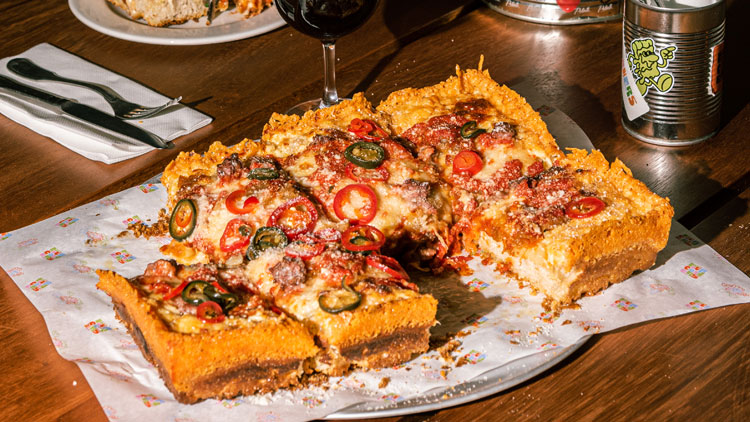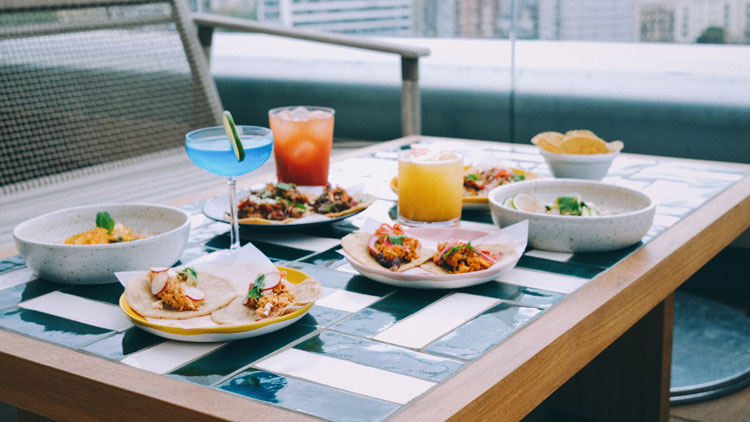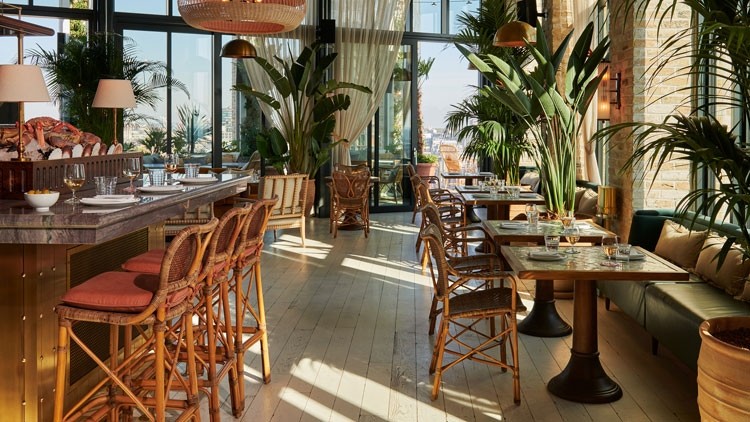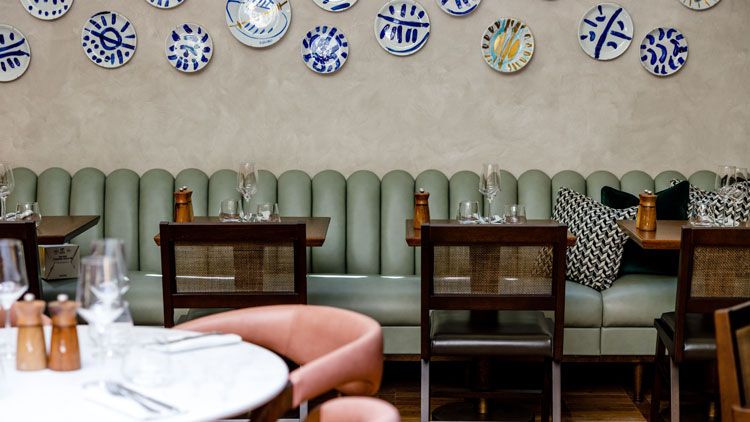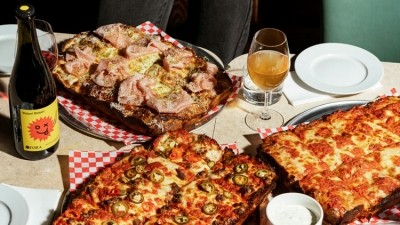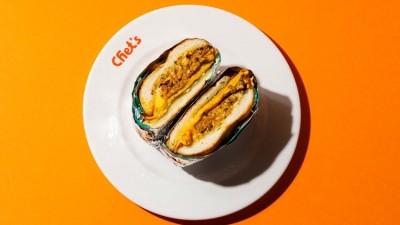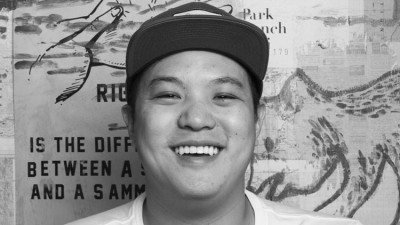Jules Pearson: “I’ve 365 restaurants, bars and night-life venues I need to programme in the next six years”
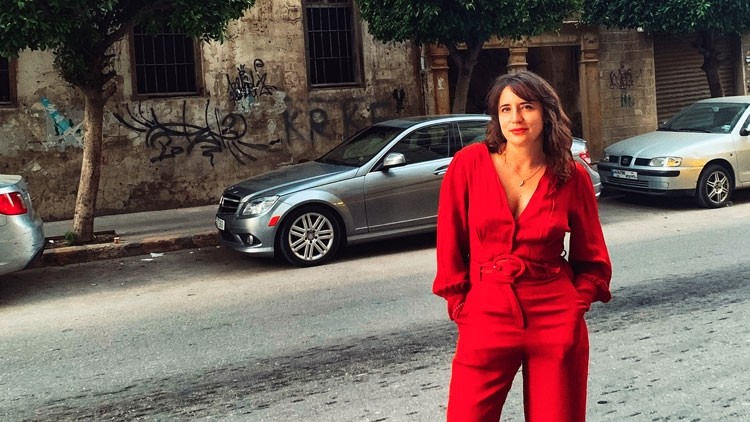
As head of the creative division within Ennismore’s Carte Blanched portfolio of restaurant and bars, Jules Pearson has a lot on her plate. Her role involves developing the programmes for food, beverage and nightlife for all of Ennismore’s hotel brands globally, which include 25hours, Gleneagles, Mama Shelter, Mondrian, The Hoxton among many others. In the UK her most recent projects include rooftop restaurant Seabird at the Hoxton in Southwark and Rondo La Cave, a wine bar and pop-up space in The Hoxton Holborn that acts as an incubator kitchen for potential new concepts for the group.
You’re creating different concepts for very different markets, how do you decide on what to open where?
When a hotel deal is signed, we’ll go out to there and do a site immersion. We’ll meet and talk with lots of people, not just in food and drink but also the locals, the people who have lived over the road for 15 years, and chat with them. Then we’ll come back and do a pulse report – not one based on numbers or statistics but on the feel of the city, what the locals are doing, how people are travelling, what the city is missing? If relevant, I’ll bring in a global brand or partner depending on what we think is needed.
Give us a recent example
We’re opening The Hoxton Brussels and when we went out there, we discovered that the biggest selling cookbook was by Enrique Olvera from Mexican restaurant Pujol and that the third most popular travel destination from Brussels was Mexico, so we thought ‘let’s do a Mexican restaurant’. There is no modern Mexican restaurant in Brussels at the moment so we can own that space.
As head of creative at Carte Blanched you have a lot of spaces to create...
If I’m not working with a partner, then we will create a restaurant concept. Thanks to the merger [with Accor] we now have 14 hotel brands globally and not enough brands to fill them with. At the moment we have over 121 hotels in the pipeline, some with numerous restaurants and bars, which means I have more than 365 restaurants, bars and night-life venues that I need to programme in the next six years.
That’s a lot. How big is your team?
We have a VP of F&B development on the culinary side [Wayne Brown] and also a VP of operations [Alex Ghalleb]. Together we lead Carte Blanched and report into Sharan [Pasricha Ennismore founder and co-CEO]. There’s also a brand director [Micaela Philippo] and a beverage director [Gareth Evans], as well as a project manager, graphic designer and interior designer but really, we’re a small team. It many ways it’s a lot of work but we’re building the team and expanding fast.
Do you create new concepts every time?
Not always. We’re building out our own concepts and also bringing in partners and we also might take existing restaurants and put them in other places. Not everything can be bespoke. We are doing a Seabird elsewhere in the world and we now have three sites for our French bistro brand Bouvier. We launched Four Corners [a Detroit-style square pizza concept in collaboration with pizza consultant Anthony Falco] at our incubator kitchen in Holborn and we’ll do that in Barcelona and we also have a potential site for that in Paris. We always have one eye on the future when creating brands otherwise there’s a lot of work to do, but sometimes they have to be one-offs. We are working on one restaurant that is based on the history and character of the building, and which it takes its name from it, so we know we won’t roll that out, but for most of them we are creating with an eye to rolling them out.
Is it as simple as just taking a concept from one country and putting it somewhere else?
No. Everything has to be 20% localised – even if it’s an existing brand. We recently opened Tope, our Mexican rooftop taqueria in The Hoxton, Portland in The Hoxton, Barcelona but it is very different to the original. In Barcelona, the Spanish palate is not trained to spicy food so it is localised in terms of spice levels; we still do a hot salsa but it’s on the side and you have to ask for it. We found a Mexican chef who lives in Barcelona to head up the concept and said to them, “this is the menu, you put your spin on it”. It’s the same with names, some don’t translate. A restaurant name might feel sexy in London but not in Berlin, pronunciations differ massively country to country. Also, the interiors are based on the building or location so they too will be different each time.
The type of hotel you’re working with must be a consideration...
We have lots of brands, including The Hoxton, 25 Hours and Mama Shelter which are neighbourhood and local, while other ones are more focused on entertainment or experience so in terms of F&B you need to think about who’s coming into the building. But the people staying in the hotel are not the customers in the restaurant. We are always targeting the locals and creating independent restaurants, because that’s when they work best. We want people to eat in the restaurant because they’ve seen it competing with independent restaurants in the neighbourhood. Price is also a consideration. In a hotel that attracts international guests with a high budget you still can’t have a menu that’s too expensive for the local market. Barcelona is a good example, it’s not super expensive because people are used to eating cheaply, with amazing tapas on every corner so you can’t price out the locals. Some hotels are more elevated and have a higher price point but it’s about balancing the local needs with the needs of the hotel.
What’s the gestation period for a new concept?
For a brand-new build, it can be two to three years but ideally no more than two years out because of the market, which can change so fast. It’s different in cities like Rome, which don’t move as fast as places like London, but if you’re planning too far out in a market like New York or London by the time it opens you’re irrelevant or you may have been beaten to it. Sometimes it can be as fast as a six-month turnaround.
What has been the most challenging city?
Rome has been challenging because it is so traditional. The mindset is pizza and pasta, which is everywhere so it’s an education piece - a bit like what Dishoom did here for Indian breakfast in London. We did something completely different at The Hoxton there and opened Beverly, a West Coast American restaurant in honour of the fact that the building used to be called The Beverly Hills Hotel. It’s been challenging; trying to get people to understand the food concept and be open minded to new things has been hard. Also, in markets like Australia where hotel restaurants are not necessarily seen as attractive places to eat like they are in New York and London so trying to find a local partner is hard as they often don’t understand why a hotel restaurant would be a good move for them.
What concept are you most proud of?
I’d say Seabird. I was looking at the restaurant scene in New York where there’s lots of oyster bars and places selling lobster rolls but in London we don’t really have that. There was Oystermen that had recently opened, Parsons in Covent Garden and J Sheekey and Scott’s but they are more classic and traditional. I wanted to do something that was more modern. We brought in the guys from Maison Premiere [in Brooklyn] because it had the biggest oyster list in America and because they were James Beard award winners. Seabird is exciting because it really is the jewel in our crown and where we bring everyone to sell them the dream. When it opened it was hard work, it was not a slam dunk from day one and took a lot of work, but now it’s flying.
What trends are you seeing based on the markets in which you operate?
We are seeing more experiential dining with people wanting to go to a restaurant who are less concerned about the food but are all about the atmosphere and forgetting the doom and gloom that’s happening in the news. Interior design has also changed. For a long time, the aesthetic was stripped back interiors and super simple was a big trend but now are seeing everything being over the top and super boujee. A lot of that is being driven by Instagram as people now visit restaurants just to get that perfect picture. The cocktail scene is also developing. Cocktails became less cool than wine, but they are coming back round again. Take Barcelona – when we were opening The Hoxton there our insights showed locals didn’t drink cocktails and that they were viewed as expensive and special occasion, but now The World’s 50 Best Bars is there in October and there is a big selection of bars there on the list. It has been interesting to see it come full circle.
Which city’s food scene leads the way?
London is leading the way. I lived in America and it’s an interesting country because it’s so vast, so a lot of Americans just travel within the country. The number of restaurateurs that have Italian restaurants but who have never been to Italy is surprising. London is so multicultural and people there can try and fail; they don’t have that same thought in America, it is a lot more serious.
Good to hear. But what’s London still missing?
I would love to do a modern Vietnamese restaurant because I don’t think anyone has absolutely nailed that yet. I have the perfect partner lined up for it, but we can’t find the right site and I don’t want to put them in sites that won’t work as we’ll kill our relationship with them. We’re also missing modern Korean restaurants on the scale that you see in New York over here – I’d love to see some of that in central London. Thai has come on a little bit but not as much as I thought it would. Recently we’ve seen so many broad stroke Middle Eastern restaurants open in Central London. I love it but it’s becoming a little saturated - another ‘cooked over fire’ Middle Eastern restaurant in London right now seems unnecessary.
What about Mexican food?
The perception of Mexican food in London is that it should be super cheap but it’s not because the ingredients are hard to source, it takes a lot of prep and is very specialist. The problem is people go to Mexico and see $1 tacos and think ‘why aren’t they like that in London?’.
What’s on the horizon for you?
There’s a lot in the pipeline. We’re opening a 25hours in Sydney and doing a huge partnership with a restaurant from London that is going to be mega – but I can’t tell you what though. The Hyde in London City is opening in a year’s time, and we are working with a London restaurant to create a new brand together, which is also exciting. At The Hoxton in Shepherd’s Bush, we will be opening a permanent Chet’s, which is a Thai/American restaurant brand in collaboration with chef Kris Yenbamroong and which is currently at Rondo La Cave. Mexico is also an exciting new market for us, and we also have partnerships with two World 50 Best bars coming up. Pre covid, there were many chefs who were not up for collaborating on projects, but now you have a conversation with some of the best restaurateurs in the best cities in the world and they are up for talking.
